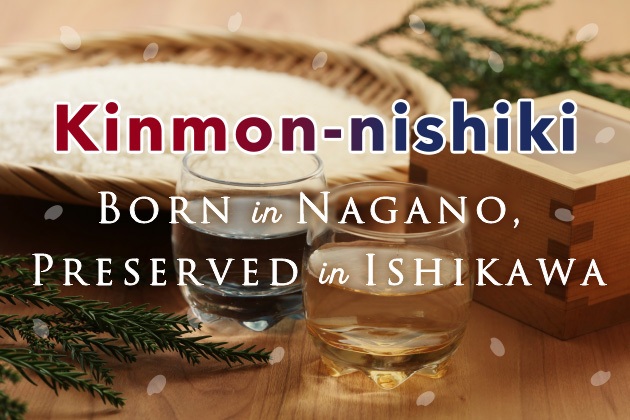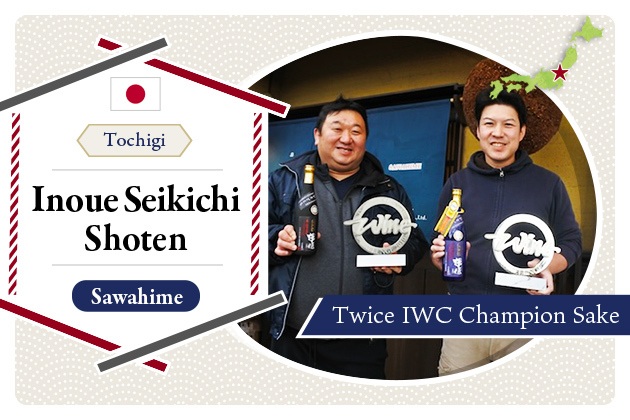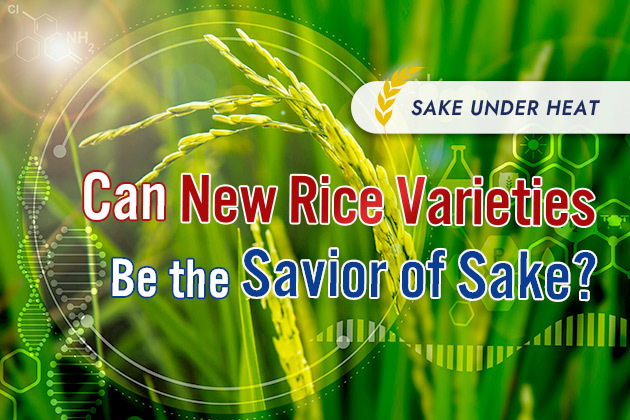
2025.10
29
Genealogy of Kinmon-nishiki: The Sake Rice Born in Nagano and Preserved in Ishikawa
Born in Nagano Prefecture, Kinmon-nishiki is a sake rice variety that was safeguarded for nearly two decades through exclusive contract cultivation by Fukumitsuya, a brewery in Ishikawa Prefecture. In recent years, it has gained renewed attention as breweries across Nagano have begun using it widely, marking its revival. In this article, we’ll take a closer look at Kinmon-nishiki—its characteristics, lineage, and regions of production.
The Rise, Decline, and Revival of Kinmon-nishiki
Kinmon-nishiki is a sake rice variety that was originally developed in Nagano Prefecture. Why did it come to be protected by a brewery in Ishikawa, and how did it eventually spread again within Nagano?
A Rice Too Difficult to Cultivate
Breeding of Kinmon Nishiki began in 1956, and the variety was officially registered in 1964. However, it was difficult to grow and also proved hard to polish with the milling technology of the time. In 1978, the debut of Miyamanishiki—soon adopted as a recommended variety for Nagano Prefecture—accelerated the decline of Kinmon-nishiki.
Farmers in Kijimadaira Village, who had been cultivating the variety since its registration, continued to grow it on a small scale even as buyers disappeared. Just when continued cultivation was becoming impossible, a helping hand came from Fukumitsuya, a historic brewery representing Ishikawa Prefecture.
Protected by Fukumitsuya, Rediscovered in Nagano
Fukumitsuya had long used Kinmon-nishiki to produce its Kuroobi brand, and in 1988 the brewery began full-scale contract cultivation, purchasing the entire harvest. Beyond simply buying the rice, Fukumitsuya also provided guidance to farmers, working to improve its quality.
After extensive discussions, Kinmon-nishiki returned to Nagano in 2006, when breweries in Iiyama began using it with Fukumitsuya’s approval. Over the next decade, its reputation within the prefecture grew steadily. By around 2016, many breweries in Nagano were once again brewing with Kinmon-nishiki.
(※1) Reference and image source: Meguru Kijimadaira, “High-Quality Sake Rice Kinmon Nishiki Handed Down from Our Predecessors.”
The Flavor Profile of Kinmon Nishiki
Because Kinmon-nishiki is cultivated under small-scale contract farming, its price tends to be relatively high. To bring out its added value, it is often brewed into highly polished, aromatic ginjo-style sake.
For example, Mizuo Tokubetsu Junmai Kinmon-nishiki Shikomi from Tanaka Shuzoten—one of the breweries involved in reviving Kinmon-nishiki in Nagano—features a clean, straightforward taste at its core, while highlighting the rice’s depth and fragrance. By contrast, Mizuo Junmai Ginjo showcases Kinmon-nishiki’s characteristic richness, yet retains a sense of clarity along with a distinctive, elegant aroma.
The richness that Kinmon-nishiki contributes also makes it well-suited for aging. Fukumitsuya’s Kuroobi Sansan 5 years aged Junmai and Kuroobi Hyohyo Ko-koshu Junmai Ginjo, for instance, fully draw out the depth that comes with maturation, resulting in a well-balanced sake profile.
The Lineage of Kinmon Nishiki
Kinmon Nishiki was created in 1964 through the crossbreeding of Yamadanishiki as the father and Takane-nishiki as the mother. Yamadanishiki, often referred to as “the king of sake rice,” is widely used for competition-level daiginjo sake. Takane-nishiki, on the other hand, is a sake rice developed in Nagano Prefecture, valued for its strong resistance to cold.
One notable variety that descends from Kinmon-nishiki is Sakanishiki, developed in Shimane Prefecture in 2003 through crossbreeding with Kairyo Hattanryu. Sake made with Sakanishiki is described as “rich in body, broad in flavor, soft in texture, and smooth on the palate” (※2). Today, in Shimane Prefecture, it is the third most widely cultivated sake rice after Gohyakumangoku and Yamadanishiki.
(※2) Reference: Shinji Takahashi et al., “Breeding of New Rice Variety ‘Sakanishiki’,” Bulletin of Shimane Agricultural Experiment Station, No. 35, 2004.
The Production Area of Kinmon-nishiki
The birthplace of Kinmon Nishiki is Nagano Prefecture, where it continues to be cultivated today. Among its most famous production areas is Kijimadaira Village, which persevered in growing the rice even as cultivation proved difficult and production volumes declined. Nagano is home to mountains over 3,000 meters high, where heavy snow falls in winter and abundant meltwater in spring nourishes the rice fields. The sharp temperature differences characteristic of mountainous regions also create ideal conditions for rice cultivation. As a result, Nagano has long been a leading producer of rice, including sake rice.
In recent years, production of Kinmon-nishiki has expanded beyond Kijimadaira to other parts of Nagano Prefecture, though it is still not cultivated outside the prefecture. Since 2014, local sake retailers and farmers have organized the Kinmon-nishiki Summit, which now draws dozens of participants—not only sake breweries and growers of Kinmon Nishiki, but also liquor stores from outside the prefecture. Today, a wide range of people across Nagano are actively working to ensure that Kinmon-nishiki continues to be cultivated and preserved for the future.
Summary
In this article, we’ve explored the history, lineage, and growing regions of Kinmon-nishiki. Born in Nagano Prefecture, the rice once faced near extinction as its difficult cultivation led to declining production, surviving only in Kijimadaira Village. Thanks to Fukumitsuya in Ishikawa, which safeguarded it through exclusive purchase contracts, Kinmon-nishiki was saved and has since regained wide use across Nagano.
Having endured such a rare and dramatic journey, Kinmon-nishiki today is brewed into a wide range of sake styles. It could be fascinating to compare how sake made with Kinmon-nishiki differs between Ishikawa and Nagano, each region bringing out its own unique expression of this remarkable rice.
Pickup Articles
2019.01.18
2019.01.25
Trending Articles
Popular Articles
Recent Articles













